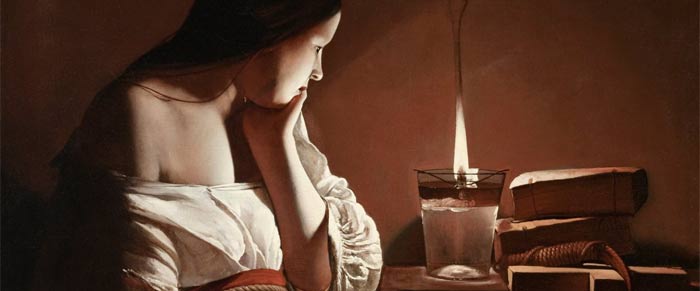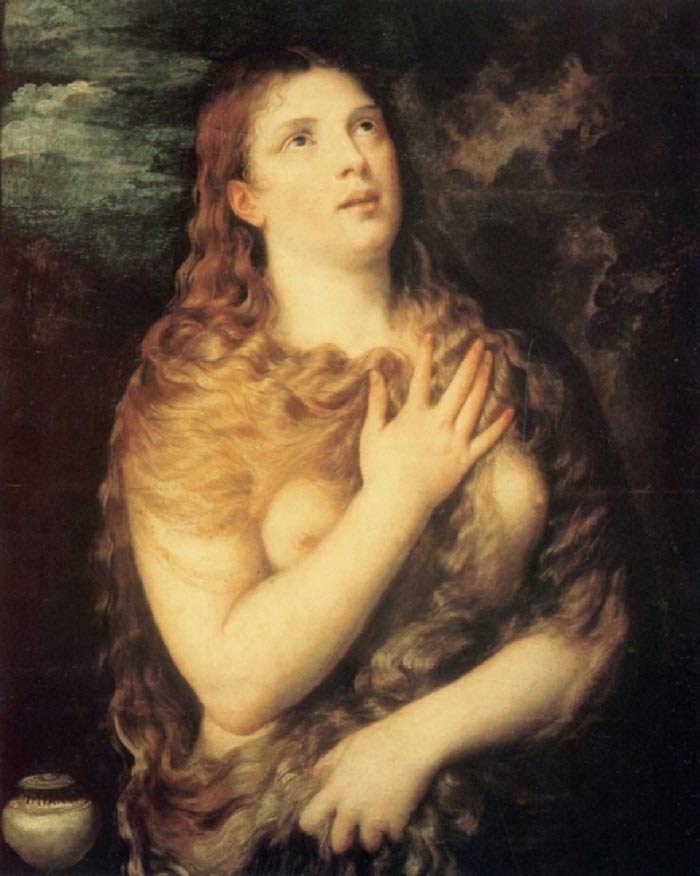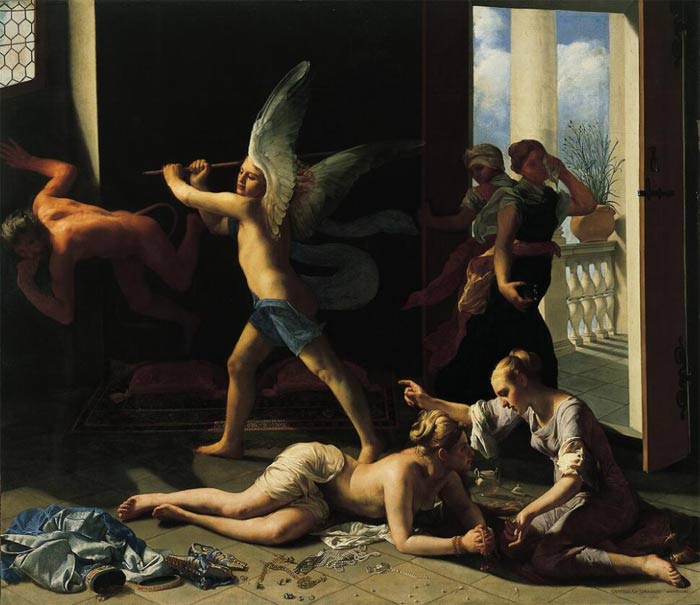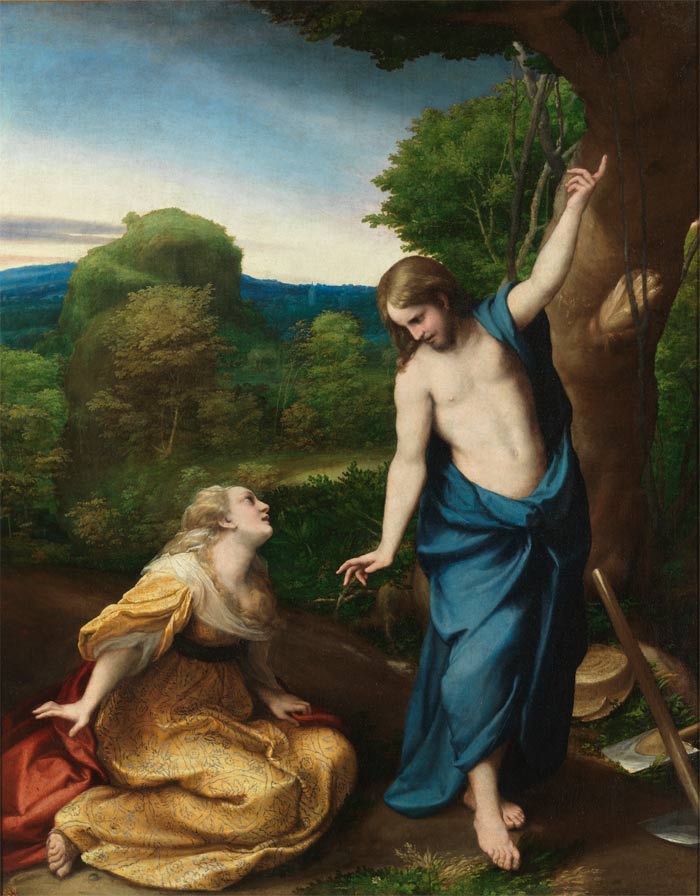Mary Magdalene in art

Article by Jimena Escoto
One of the most famous women in Christian tradition is Mary Magdalene. Her presence in Jesus’ life has been debated since the beginning. While some people, mainly followers of Christianity, have no doubt that she was a prostitute who Jesus helped and redeem herself to the point that she became a saint, other are not so sure about this narration. There are some people who have said that contrary to the known tale in the bible, Mary Magdalene was in fact Jesus’ wife or that she was one more of his apostles. There is no surprise in the reaction that the Church has towards this declaration. The implications are huge! But, I am not here to talk about Mary Magdalene’s true story. In this article I will explore how the Old Masters have managed to depict her.
From the 14th to the 17th century, Mary Magdalene occupied a privileged position in religious art. Only second to Virgin Mary, Magdalene was interpreted by multiple artists across Europe. Her popularity can be attributed to her relativity, after all, she was just a woman who fell into sin but was able to redeem herself and gain Jesus’ favor. Mary Magdalene’s journey let common people know that even the worst sinners can find a way out. She is represented as a sinner, a reformed prostitute, a miracle worker, a penitent, she is shown in Christ’s Passion and Resurrection’s scenes, and as a saint.
During the Renaissance, the Italian cities were having a real problem with prostitution and took Magdalene to promote a life away of that practice. Titian was one of such artists who painted her as the symbol of redemption.

Penitent Magdalene by Titian
c. 1531, Oil on canvas, 85 cm × 68 cm (33 in × 27 in)
Palazzo Pitti, Florence
In his works he shows us Magdalene as a penitent. He shows us the moment when she realizes her sinful life and weeps as she looks at the sky. His first Magdalene was painted in 1531, but he returned to it 30 years later.

Penitent Magdalene by Titian
1565, Oil on canvas, 119 cm × 98 cm (47 in × 39 in)
Hermitage Museum, Saint Petersburg
This painting, though touching a Christian theme, seems quite erotic. This is because it follows a medieval narration that told that during the following thirty years after Jesus’ ascension, Mary Magdalene wandered through the desert while her clothes fell apart. Artists of the time tended to utilize this depiction as a way of mixing eroticism and religion without risking scandalous reactions. Her physical attributes correspond to the ideal of beauty of the period: golden long hair, full lips and fleshy body.
One of the least ordinary depictions of Mary Magdalene was made by the Baroque painter Guido Cagnacci. He was known for the sensuality with which he represented women.

The Repentant Magdalene by Guido Cagnacci (Italian, 1601-1663)
1660, Oil on canvas, 90-1/4 x 104-3/4 in. (229.2 x 266.1 cm)
Norton Simon Art Foundation
Here we see Magdalene lying on the ground, almost completely naked. With her, there is her sister Martha who urges her to abandon her sinful life and join Jesus. She is pointing at the angel representing Virtue behind them who is pushing out a devil, Vice. Moreover, in third plan, there are a couple of women. One of them is crying while the other seems annoyed, personifications of Contrition and Vanity, respectively. Cagnacci added clothes and jewels on the floor, symbols of Magdalene’s rejection of earthly vices. This is more than just another painting, this is unique and Cagnacci knew it. Unlike other painter who signed with their names following the word “painted” or “made”, he wrote: GVIDVS CAGNACCIVS INVENTOR.
Another very popular way of painting is Mary Magdalene holding a skull. This may seem a very dark representation, but its purpose is to remember or to be aware of our mortality. As Magdalene is shown contemplating the skull, she reflects and makes us reflects on the fact that one day we will be dead, and it would be better if we are close to God. George de la Tour shows Magdalene in a dark room sitting and looking at a mirror, while she places a skull in her laps.

Mary Magdalene with a night light (Magdalene with the Smoking Flame) by Georges de la Tour
1630 – 1635, Oil on canvas, 94 x 128 cm
Louvre, Paris, France
Finally, a recurrent theme in Magdalene’s paintings is Noli me Tangere which means “touch me not”. According to John these are the words Jesus told Mary Magdalene after his resurrection. She was the first person who knew that Christ was not dead.

Noli Me Tangere by Antonio da Correggio (1489–1534)
Circa 1525, Oil on panel transferred to canvas
130 x 103 cm (51.1 x 40.5 in)
In conclusion, whether you believe or not the story of Mary Magdalene as the Bible tells it, there is no deny that she was important in Jesus’ life. She was one of his main followers and following her death she became this icon of repentance and the possibility of a second chance. She inspired dozens of artists across time and space and still today.
To learn professional drawing techniques,
- Receive 15 new videos monthly (45 in total)
- Incredible discount – $4,164
- Bonuses - Fine Art eBooks and Videos
- Drawing Academy Diploma of Excellence after course completion in 3 months
- Personal coaching by Drawing Academy Tutors
- Lifetime membership. Free after the 3rd month
- Immediate access to all 45 video lessons
- Incredible discount – $4,198
- Bonuses - Fine Art eBooks and Videos
- Drawing Academy Diploma of Excellence after course completion in 3 months
- Personal coaching by Drawing Academy Tutors
- Lifetime membership. No more payments


Excellent article. I love MM iconography, but some of the symbols went right over my head. I never knew what the skull supposed to be, and I thought the long red hair represents her ‘loose standards’. My understanding is clearer now – thank you.